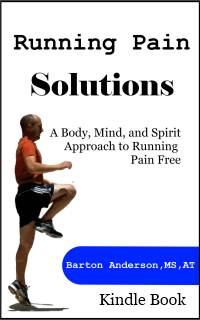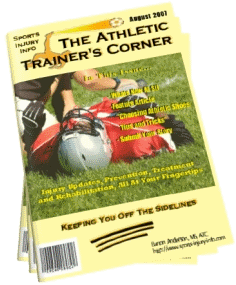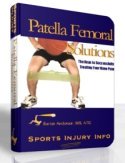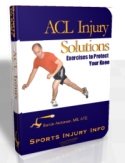Why is Shoulder Pain Common?
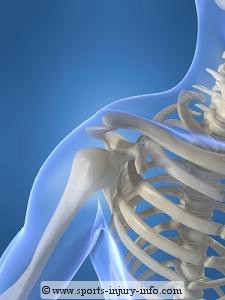
Shoulder pain is so common because the shoulder is an amazing joint. Probably one of my favorites in the whole body. Thats pretty big, considering how many joints I deal with every day.
Pain in the shoulder is amazing too. Not because I like my patients to have problems, but because there are just so many things that can cause it.
- Improper mechanics
- Tight muscles
- Weak muscles
- Loose ligaments
- Sleeping on it wrong
and my favorite...
The shoulder is an amazing joint...it amazes me everyday. Let me explain why...
The Gods Must Be Crazy?
Take a look at the shoulder. The way it is put together seems crazy...yet it is so "right". It is, by definition, a ball and socket joint. But if I was a "ball and socket" manufacturer, I would be out of business if I produced this kind of ball and socket.The surface area of the "socket" is tiny. I like to think of it more like a saucer. Flat, not very deep, and small. Now, this saucer would be fine if the "ball" was about the same size. But it isn't. The humeral head is huge compared to the glenoid. So, take that saucer, and now place a basketball on it. See where I am going?
The shoulder is inherently unstable. Which makes me wonder what on earth they were thinking when they started making the human shoulder.No wonder so many people have shoulder pain. You have a poorly constructed "ball and socket" joint that is constantly injured.
But, as with a lot of great things, what seems to be wrong is exactly what is right. Because the shoulder is made the way it is, it allows for unbelieveable range of motion. No other joint in the body can move like the shoulder. Try to move your knee in 3 different directions...or your fingers. Try throwing a 90 mph fast ball with only two limited directions of motion. So, maybe the lack of a true "socket", and a giant ball to boot isn't that bad afterall.
Shoulder Muscles - The Unsung Heros
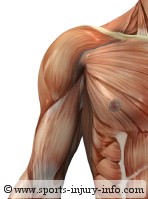
The rotator cuff, or better yet, the four muscles that make up the rotator cuff, is where the magic lies in the shoulder. I am not going to bore you with all of the physiology and kinesiology, but basically, they act like a steering wheel for the shoulder. Because each of them attach on the humerus in different positions, they can all cause different motions in the shoulder. And this is vitally important when you think about shoulder stability. Afterall, something has to help keep that basketball on the saucer, as it turns all around and upside down.
The rotator cuff isn't responsible for creating the big sweeping motions that we see pitchers and athletes perform. No, their one job is to guide the humeral head, and to keep it centered in the socket. It really is that simple. If the humeral head stays centered, all is well. If not, you get shoulder pain.
The Shoulder Pain Cycle
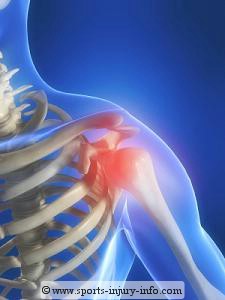
My patients ask me "why does my shoulder hurt". Sometimes I wish I could tell them "Because you waited 3 years to come in and see me for treatment."
Most of the time, I explain the very complex nature of the shoulder, how it functions, and where their problems are. What are the most common things I see in my patients?
Well, really, it is usually one or two things among all of them. They have rotator cuff muscles that are not working correctly, or as a team, and they have either ligament laxity, or unbalanced capsule tightness, and weak upper back muscles. All of this is usually caused by the shoulder pain cycle.
The pain cycle in the shoulder starts with some type of injury. This can be something major, like a dislocation, or something minor like lifting something just a little too heavy. Once that initial injury occurs, two things happen. You get shoulder pain, and you get your bodies response to pain...muscle spasm.
When a muscle spasms, it does it because the body tells it to "protect the joint at all costs". With this new job, it can't do its old job effectively. And it hurts. Think about the last time you had a charley horse, and you will know what I am talking about.
So now you have a shoulder that is painful, and muscles that don't want to work. Remember what the one job of the rotator cuff is? To guide the humeral head and keep it centered in the socket. Throw that job out the window.
The cuff has just gone on vacation, too worried about being in spasm to care about where the humeral head goes. And beleive me, if you give the humeral head an inch, it will take a mile. It will migrate up into the acromion...and impinge on the rotator cuff. It will move forward and put pressure on the biceps tendon. It might go south and pull on the deltoid or the rotator cuff. But no matter where it goes, it causes more pain, and more spasm...
And the cycle continues.
Stopping the Madness
Rest is usually the best way to stop the shoulder pain cycle. Sometimes this is in the form of a sling, other times it means not playing ball for a week or two.Unfortunately, once the cycle starts, it is hard to jump start normal function again. Remember those rotator cuff muscles that went on vacation from their usual job of guiding the humeral head? They don't like to get back on the job. And usually, when they do, they are way behind.
Other muscles, like the trapezius will help out, but that isn't the trapezius's main job. So it doesn't do it well. And the cycle will start again.
The only way to fix shoulder pain is to get every muscle back to doing the job it was meant to be doing. Unfortunately this takes some time.
In order to get to the root of the problem, you will have to see someone who can figure out what is going on. And that means your physician or athletic trainer. We are pretty handy at kicking those rotator cuff muscles in the pants and getting them back to work.
But Wait, There's More!
Shoulder function is a very complex thing. As is shoulder pain. So many things can contribute to shoulder pain, and it just gets worse with time.Did you know that how your upper spine moves (or more commonly, doesn't move) can contribute to shoulder pain? Did you know that how strong your hips are can too? I bet your ankle sprain from 10 years ago could have something to do with your shoulder problems? Now you think I am just pulling your leg...or arm.
The human body amazes me everyday. It is all connected. So, make sure that when you do decide to see your physician or athletic trainer, that they don't forget all of the muscles, bones, and joints around he shoulder. Make sure that they get those muscles back to their jobs. It will help your shoulder pain...and it will keep you off the sidelines.
Didn't find what you were looking for? Search SII for more information...
Running Pain Solutions
Written for Runners by a runner, you'll learn a holistic approach to improving mobility, restoring normal movement and muscle activation patterns, and restoring the body and mind connection.
This Kindle Book contains a step by step program to keep you running pain free. Included are detailed instructions and illustrations for exercises to improve mobility, balance, neuromuscular control, strength and endurance. Only $7.49!
Get Your Copy Today!
